Is it better to stake or cage tomatoes?
My journey to the ideal tomato trellis system has not been an easy one. It started with using a flimsy round “tomato cage,” which couldn’t bear the weight of my vining tomato plant loaded with fruit.
Then, I turned to the Florida Weave method. This worked beautifully for my Roma tomatoes but not the vining, indeterminate varieties.
Finally, I decided to try two other popular methods — tomato staking using a trellis system and a heavy duty professional tomato cage. Then I tested each method and took detailed notes on the yields of each.
In this episode of the Beginner’s Garden Podcast and in the article below, I share the results of my testing. You’ll learn the benefits and drawbacks of both the single-stem tomato staking method and the heavy duty tomato cage. By the end, you’ll see which one I settled on and why.
Click below to listen or read the article below.
Tomato Stakes vs. Tomato Cages
Before I talk about the single-stem tomato staking method and the heavy duty tomato cage, I need to return back to the second method I referenced above — the Florida Weave.
I still use the Florida Weave for my Roma tomatoes for so many reasons. If you’re growing Romas or any other determinate tomato, I urge you to read this post.
But if you’re growing vining, indeterminate tomatoes, you probably want something that can handle these larger varieties.
Single-Stem Tomato Stake Using T-Posts, PVC, and Rebar
A single stem tomato staking method requires that you train the tomato plant to one main stem. You also will want to prune most or all of the suckers. You can do this many ways — one of the easiest being to train and tie each plant to one tall tomato stake.
But since I was looking to trellis close to thirty tomato plants, I had to ask, “how do you stake a row of tomatoes?” That’s why I decided to build a bigger trellis using t-posts, PVC couplers, and rebar.
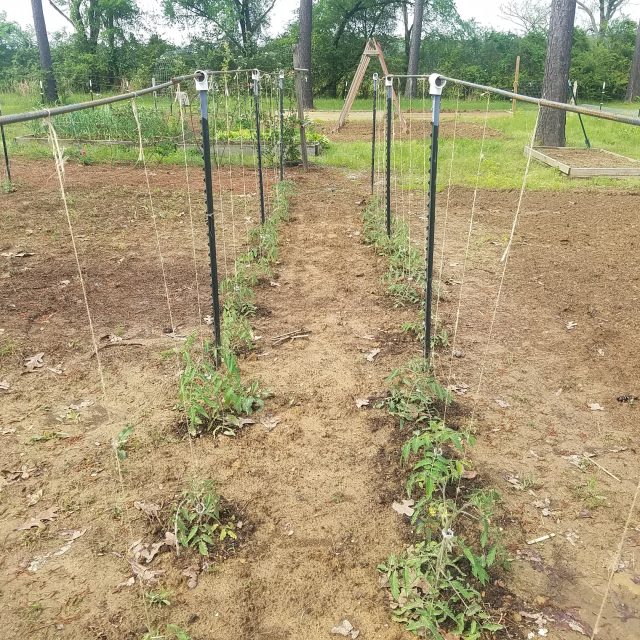
*links below contain affiliate links
How I Built My Single Stem Tomato Staking System
First, I purchased 6′ tall t-posts and set them in the ground about 6′ apart. Then I affixed PVC couplers to the top of the t-posts and set rebar in the couplers for a horizontal trellis.
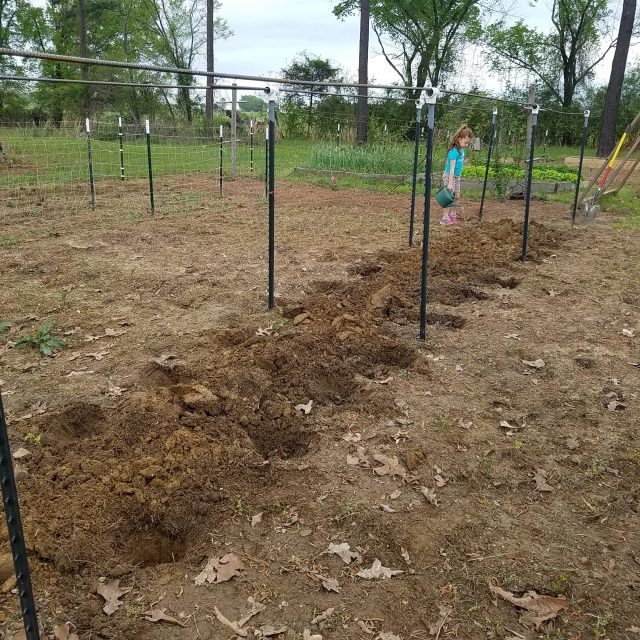
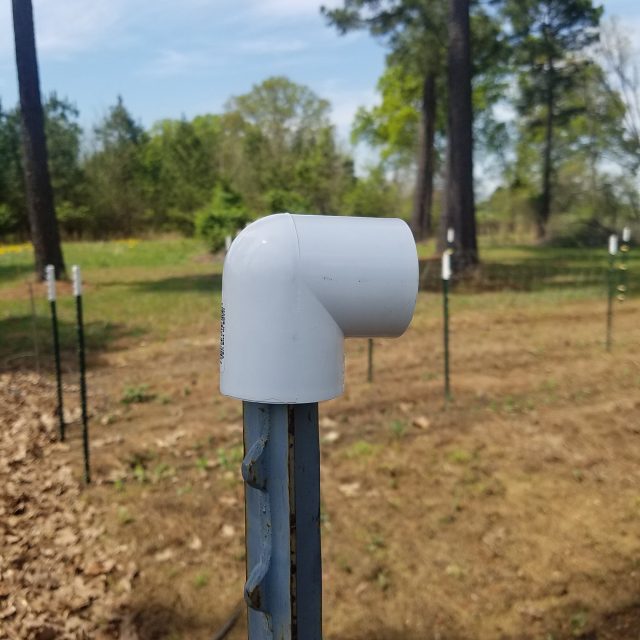
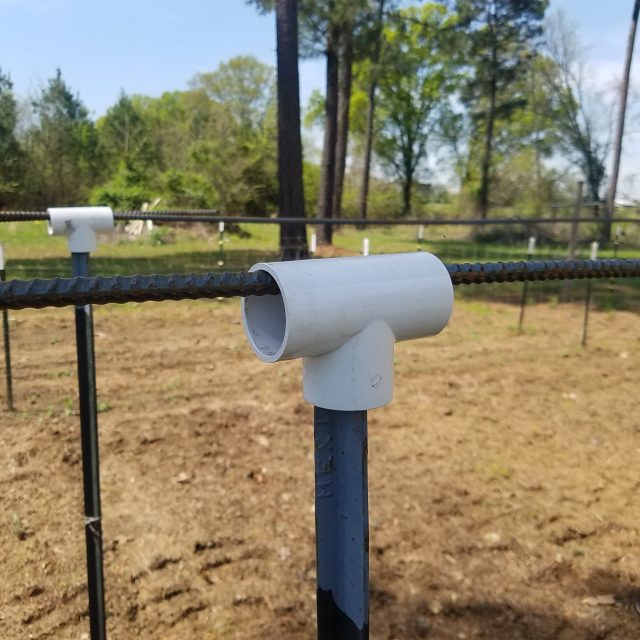
From the rebar, I tied twine and brought it to the ground next to my newly planted tomato transplant. I tied the twine to a landscape pin, which I plunged in the ground next to the tomato stem.
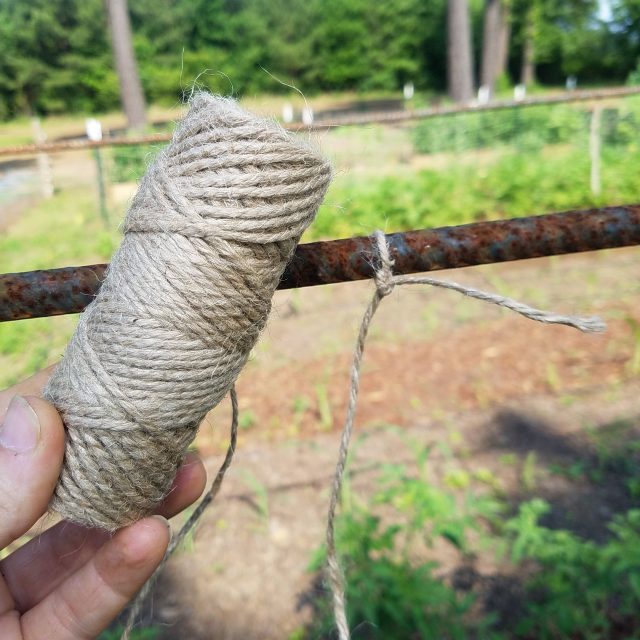
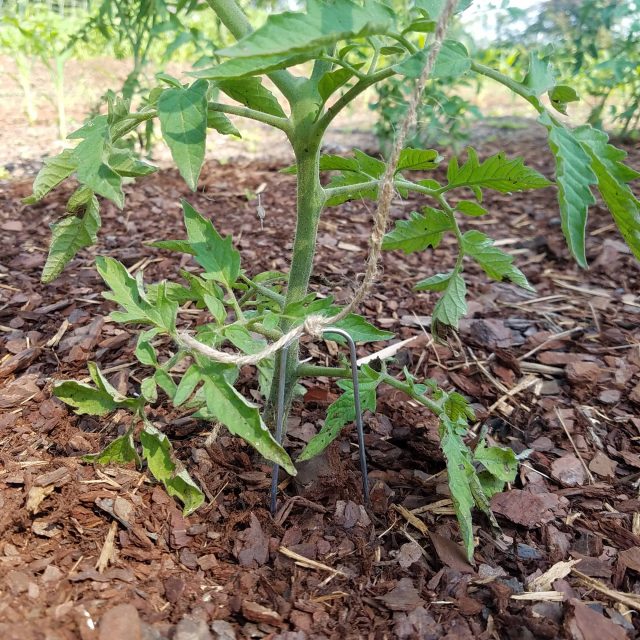
As the plant grew, I used tomato clips to affix the main stem of the tomato plant to the twine at intervals of about 12″.
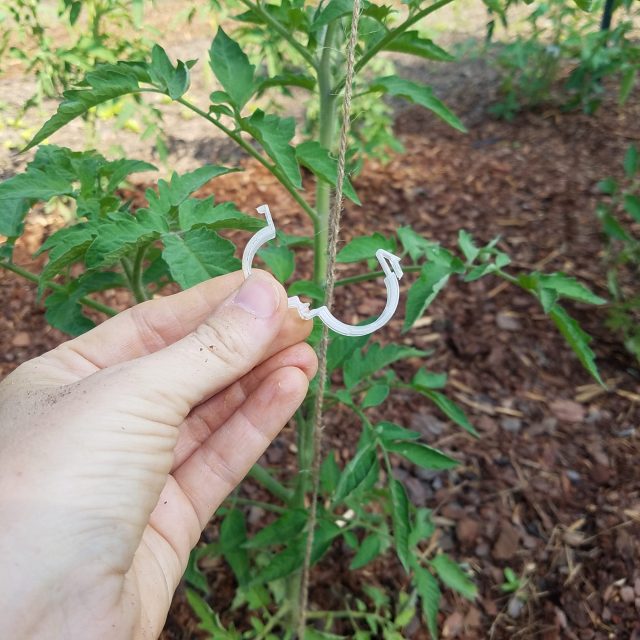
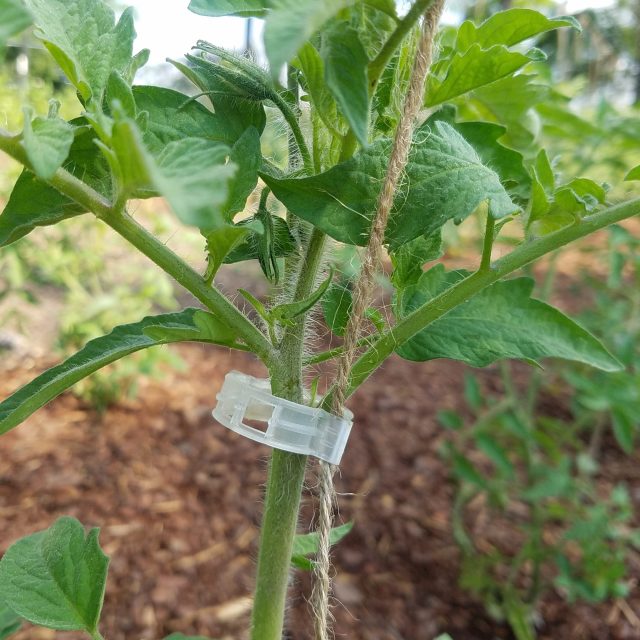
I planted each tomato plant two feet apart, aiming for an intensive planting method to get more plants into a smaller amount of space. In the test I planted Amish Paste, Arkansas Traveler, and Black Krim varieties.
Toward the end of the season, after the vining tomatoes outgrew even the horizontal rebar, I trained the stem horizontally across the rebar.
Heavy Duty Tomato Cage
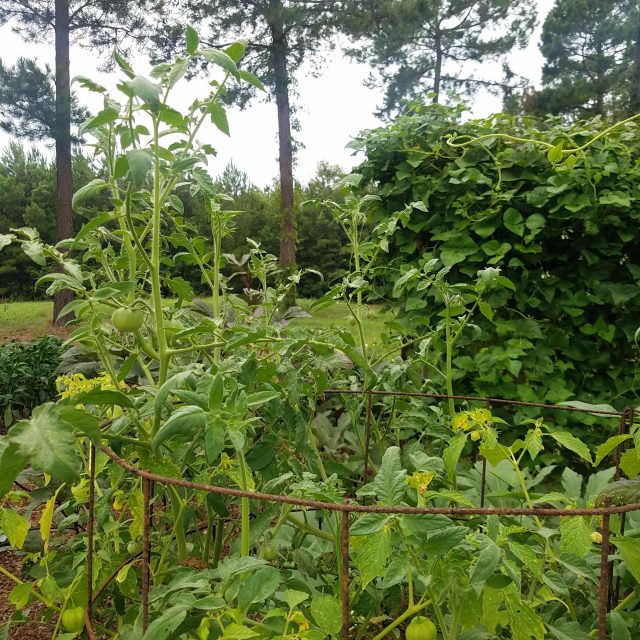
With a heavy duty tomato cage, the goal is for the tomatoes to grow freely while being well supported. The cages should be at least 5′ tall — enough to accommodate most vining tomato varieties. You want to be able to reach your hand into the cage both to harvest and to hand-pick pests. Six inch by six inch square openings are ideal.
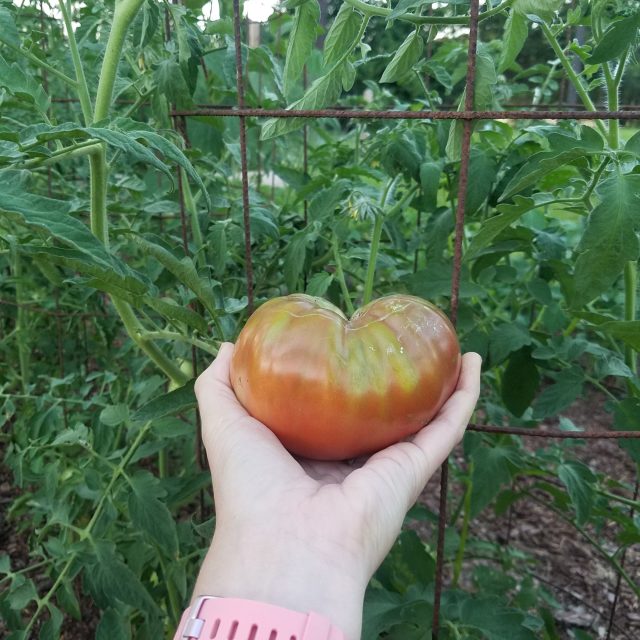
Though you can use concrete mesh, welded wire, or other heavy duty tomato cages, I chose to use concrete mesh.
How I Built Tomatoes Cages Using Concrete Reinforcing Wire
For the heavy duty tomato cages, I used leftover concrete reinforcing wire mesh that we had after we poured a patio.
Using bolt cutters, I cut the mesh into 6′ sheets and rolled them into circles. (I have also seen others make more narrow cages and only cut 5′ sheets.)
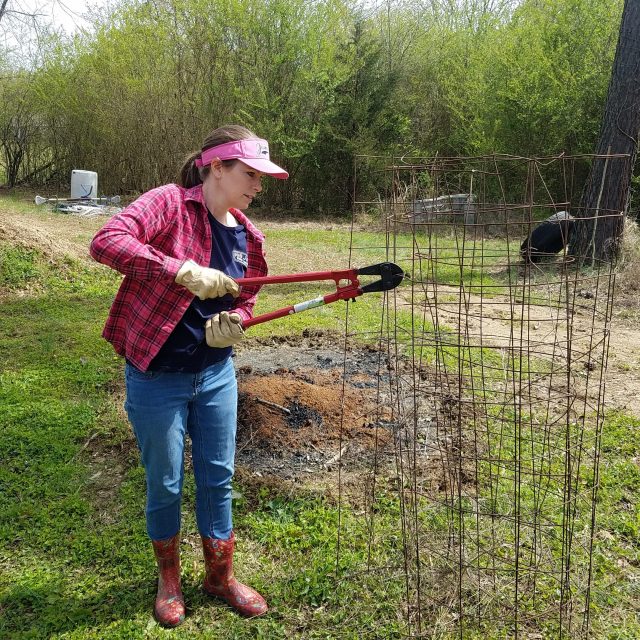
At the bottom of each 5′ tall cage, I cut the bottom layer of horizontal wires so the vertical wires would serve to stick into the ground for stability.
In order to test the cages against the single stem method, I used the same varieties — Amish Paste, Arkansas Traveler, and Black Krim.
Tomato Stakes vs. Tomato Cage: Which Yielded More?
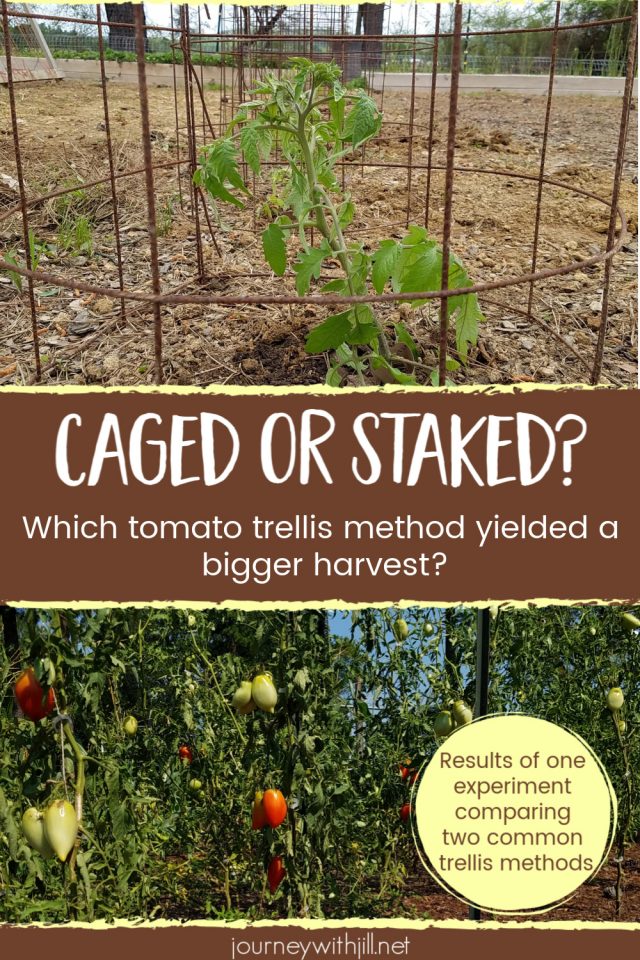
Although I only tested these methods against each other over the course of one season, the results were staggering.
The tomatoes I planted in the heavy duty tomato cages yielded twice the amount of tomatoes in pounds per plant.
Though I tried to make the tests equal in every other way, I need to share some variables that may have contributed to the stark difference in yield.
The tomatoes using the tomato cage were planted further apart. Due to the sheer size of the tomato cage, the tomatoes themselves were spaced three to four feet apart on center. This could have contributed to the heavier yield because they didn’t have to compete with each other for nutrients.
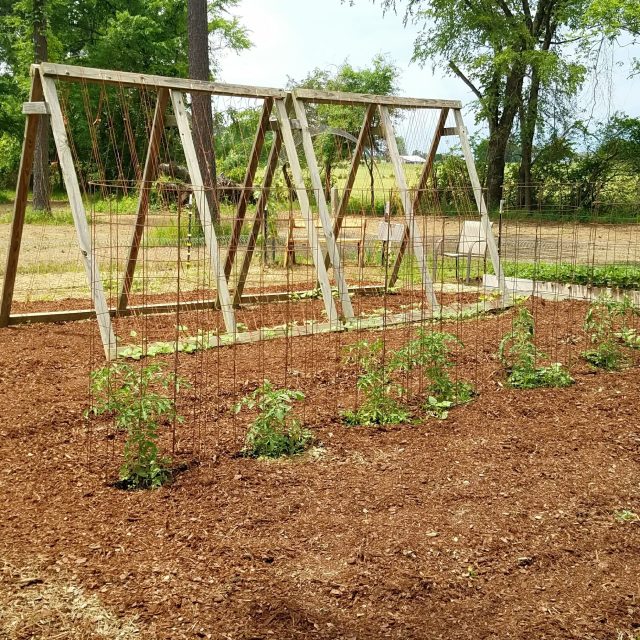
The tomatoes using the tomato cage were planted in a different area of the garden. While both sets were only about twenty feet apart, the garden area where the caged tomatoes grew has not been in production as long as the area where the staked tomatoes grew. It’s possible, therefore, that the caged tomatoes had more access to nutrients in a less depleted soil.
Pros & Cons of the Single Stem Tomato Staking Method
Besides the lower yield in my test, there are other considerations when it comes to using a single stem tomato method.
Using the staked tomatoes, I was able to spot tomato hornworms more easily. This method also allowed more easy picking of the tomatoes themselves. And when pruned to a single stem, rows of tomatoes offer a neat and tidy look to the garden.
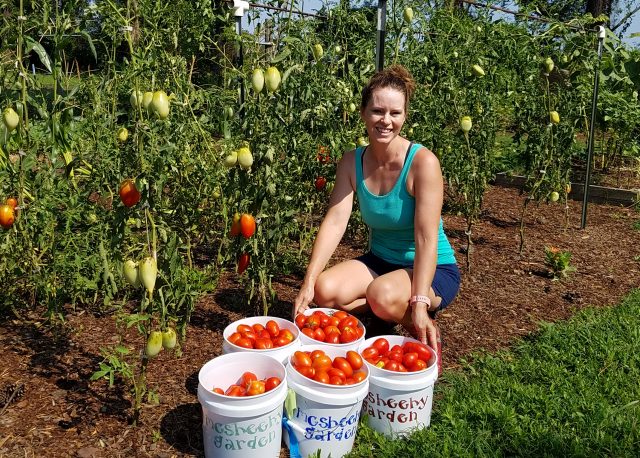
By contrast, my staked tomatoes showed higher vulnerability to sunscald. This probably had more to do with the less amount of foliage available (due to pruning) to shade the fruit from the sun. These plants also succumbed more quickly to Septoria Leaf Spot. Again, I’m attributing this to the lower amount of foliage, thus a quicker demise.
Though you can stake tomatoes using a single stem using any vertical stake, the system I used cost about $60 for two rows of approximately 28 feet. This supported 24 plants at a cost per plant of $2.50. And if I were to continue using this method, it would last for years to come.
Pros & Cons of the Heavy Duty Tomato Cage
Besides the higher yields in my test, I want to make sure to share both other benefits to the heavy duty tomato cage and a few drawbacks.
I loved that my cage ended up doubling as a bean trellis. Since I had grown pole beans the year before in that spot, volunteers grew up the cage, giving me even more harvest and providing aesthetic appeal to the system. I also know that these cages will last for years — some people using this method attest to 10-15 years of use.
I have to admit, picking these tomatoes wasn’t as easy, as I generally had to reach into the tomato cage to harvest. And because the concrete mesh rusts quickly, I had to be careful not to cut myself on the rusty metal. (This wouldn’t be a problem with welded wire.)
And if you find your tomato plants outgrowing the cage, here are some tips on pruning your tomatoes at the end of the season.
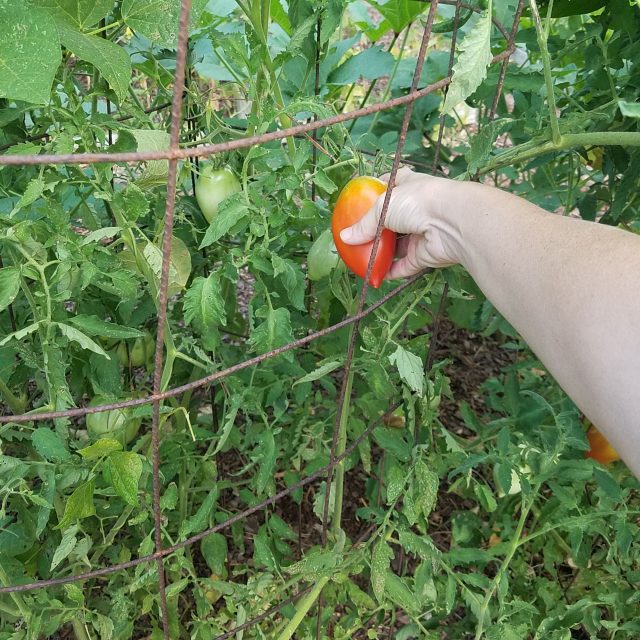
Perhaps the biggest drawback to the heavy duty tomato cage is cost. Not everyone has concrete remesh lying around from a construction project like I did. If you were to purchase this concrete reinforcing wire, you would have to pay over around $165 for a roll. Although this roll gives you 150 feet and you could make 25 cages, you might not need that many. Still, at a cost of $8.25 per cage, this is much cheaper than heavy duty cages you can price elsewhere.
Tomato Stakes vs. Cages: Which is Better?
If you can’t tell by now, I choose heavy duty tomato cages hands-down. But, if you have the time and sense of adventure, I urge you to do a similar test in your own garden.
Tomatoes grow differently depending on your climate, and you may find different results. But for me, the ease of cage (once it’s built) and not having to prune the plant makes this an easy decision for me.
Heavy Duty Tomato Cage for the win.
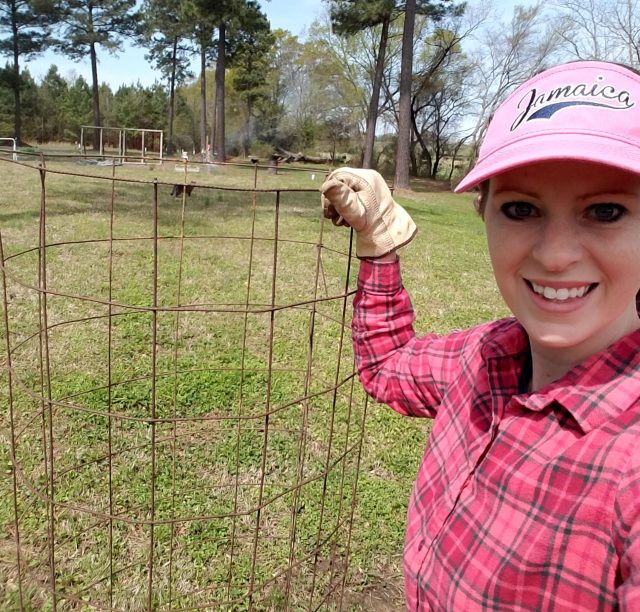
What about you? What results have you found in your garden with different tomato trellis methods?

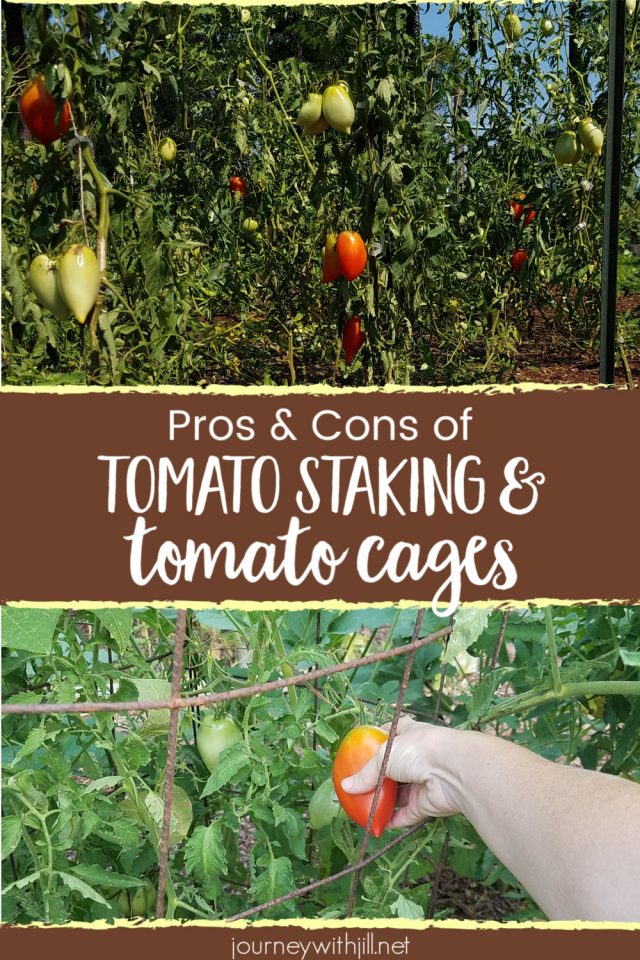
This is a very handy guide and with some lovely photographs too. Thanks for sharing your advice and experience. Those cages definitely look very sturdy!
I used nylon trellises (think wall instead of cage) last year. I trimmed my tomatoes in an espalier style. Trying to keep growth inline with the trellis. Helped with air flow and finding fruit! I do plant 1 per square foot (SFG raised beds) but we had more than enough tomatoes. I have a big garden! I took suckers off the first couple months but after a while I let the suckers grow since new growth of main stem had grow above my reach and I started trimming the tops. The drawback of the nylon trellis was it was floppy. I’ve upgraded to the remesh metal panels used for concrete. Like what you made yours from but I got the sheets that were flat so I didn’t have to unroll and flatten out the roll. I’m excited. Tomatoes are planted.
Jill,
Thank you for the great analysis of the 2 methods. It was easy to understand and the photos were great.
For a little more expense, they have spray rubberised paint for yard tools, you can paint cage to prevent rust & add color & not be an eyesore. I guess just painting with a Rust-Oleum would do it too. Liked the comparison & info. This will be my 1st year at gardening & I’m also going to try different methods for comparison. Thanks for tip about differences between handling the different types of tomatoes, ie, vining etc.
Great post and podcast Jill! I listened to the podcast today and found your results fascinating. I do the florida weave, like you mentioned, for my determinate tomatoes and really love it. For my indeterminate tomatoes I do a combo of florida weave, staking, and doing a large wood trellis similar to your T post and Rebar but very tall at 7 feet. It’s been working well but I do have to prune some of the suckers off which does lessen yields. I also do the tight spacing at 2 feet. After hearing your results I think I’m going to make some heavy duty cages too!
Also, I was thinking about it and it seems like the yields per square foot seem the same for both methods right? The four foot spaced tomatoes yielding double what the two foot spaced tomatoes did?
Either way, if they get less disease being caged I’m all about that haha! Thanks for the inspiration, I like too experiment too and will try it out! I also had a good laugh over your baby tiger comparison to the cages they sell at the store. It’s so true, they look nice but the reality is those cages are a joke for anyone living in the south 🙂
Good point on the square footage. I did some more calculating and the caged tomatoes were closer to 3 feet apart instead of 4, so the caged tomatoes yielded 75% more than the unpruned staked tomatoes per foot row. I will probably stick with the 3′ apart with the cages this year and I’ll re-calculate and see how they compare to last season.
Ahh that’s good to know! I’m have to be super space conscious because I’m trying to grow so much in a small area. So that helps for sure. I’m definitely going to try your method in with some of the tomatoes and see how it goes!
I’d love to hear if you get similar results or not. Even though you and I garden in similar climates you never know from one garden to another!
My wife and I use the concrete reinforcing mesh. I haven’t really compared it to other methods as this is what my father used starting in the 70’s so it was sort of natural to continue the tradition.
I do have a good number of the coated larger commercial round tomato cages what work well for my pepper plants, especially jalapenos. Not so much for cayennes though, they get too tall. I’ll be using reinforcing wire for them also this year.
I didn’t realize cayennes get so tall! I’m growing this year for the first time.
Like the idea of rebar and pvc nice support for tomato cage.